The machine consists of a pair of discs which turn in opposite directions on the same axis, on the edge of these discs are glued strips of tinfoil, 2 bottles of Leyden and 2 glass and metal conductors, a wooden crank is used to operate the whole. With this type of machine one can obtain sparks of about ten centimetres.
Machine whose discs are not in glass but in ebonite, this device was patented in 1908, by the German manufacturer Alfred Wehrsen, who signs the present model (plate riveted to the base).
"ALFRED WEHRSEN / MECHANIKER / BERLIN S.O / BRÜCKENSTR 10
Date: ca. 1905-1908
Very nice model, revised machine, in excellent condition.
Bibliographical references:
- Max Kohl, Chemnitz, Apparatus for Physics, catalogue no. 22, (undated, ca. 1904): pp. 343-344, fig. 1397: similar model.
- BOSSERT, François. Machine de Wimshurst, Bulletin de l'Union des Physiciens, No. 696, July-August-September 1987, pp. 881-907.
- GIRES Francis, L'Empire de la physique, 2006, n°205, p. 269.


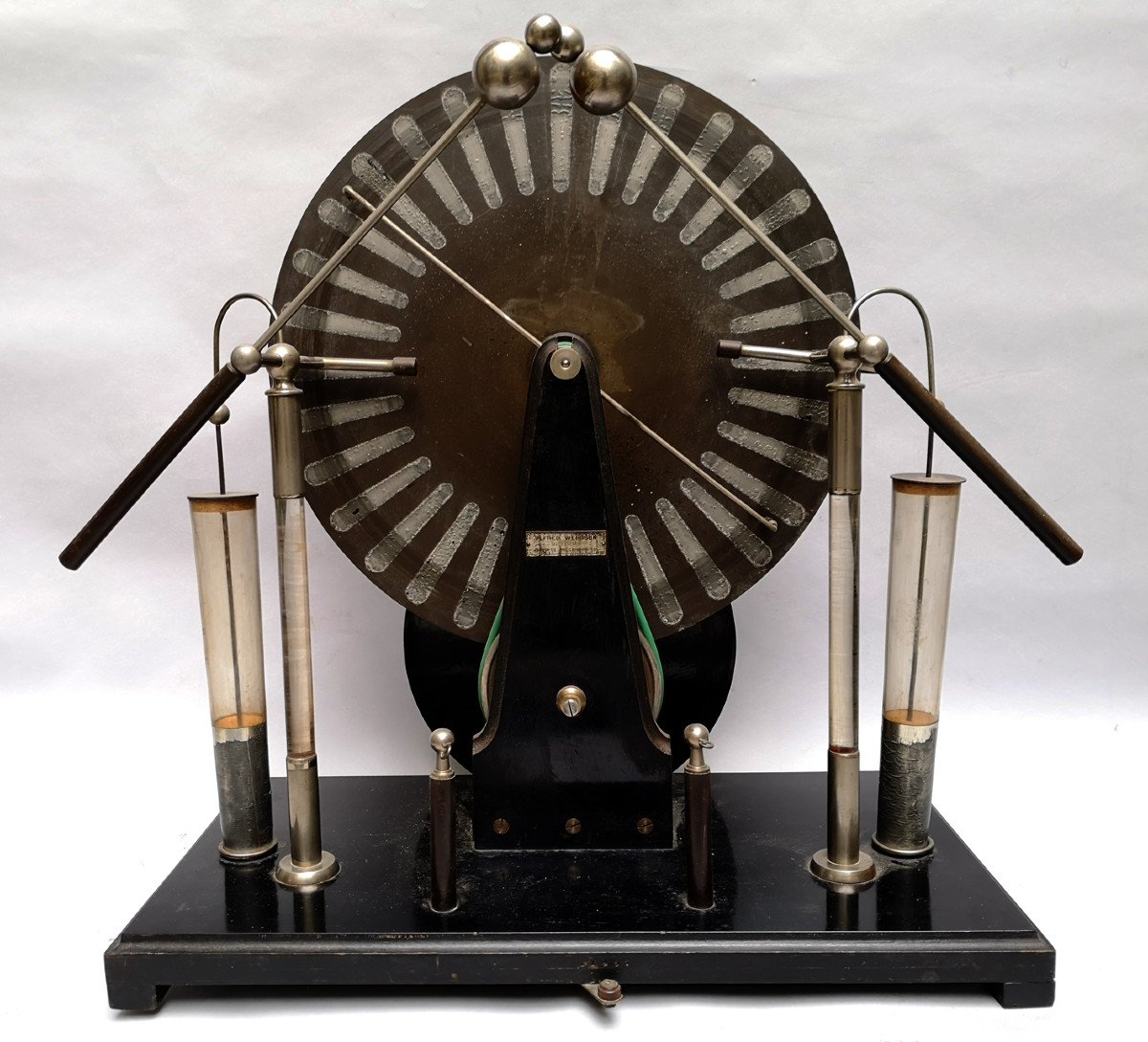
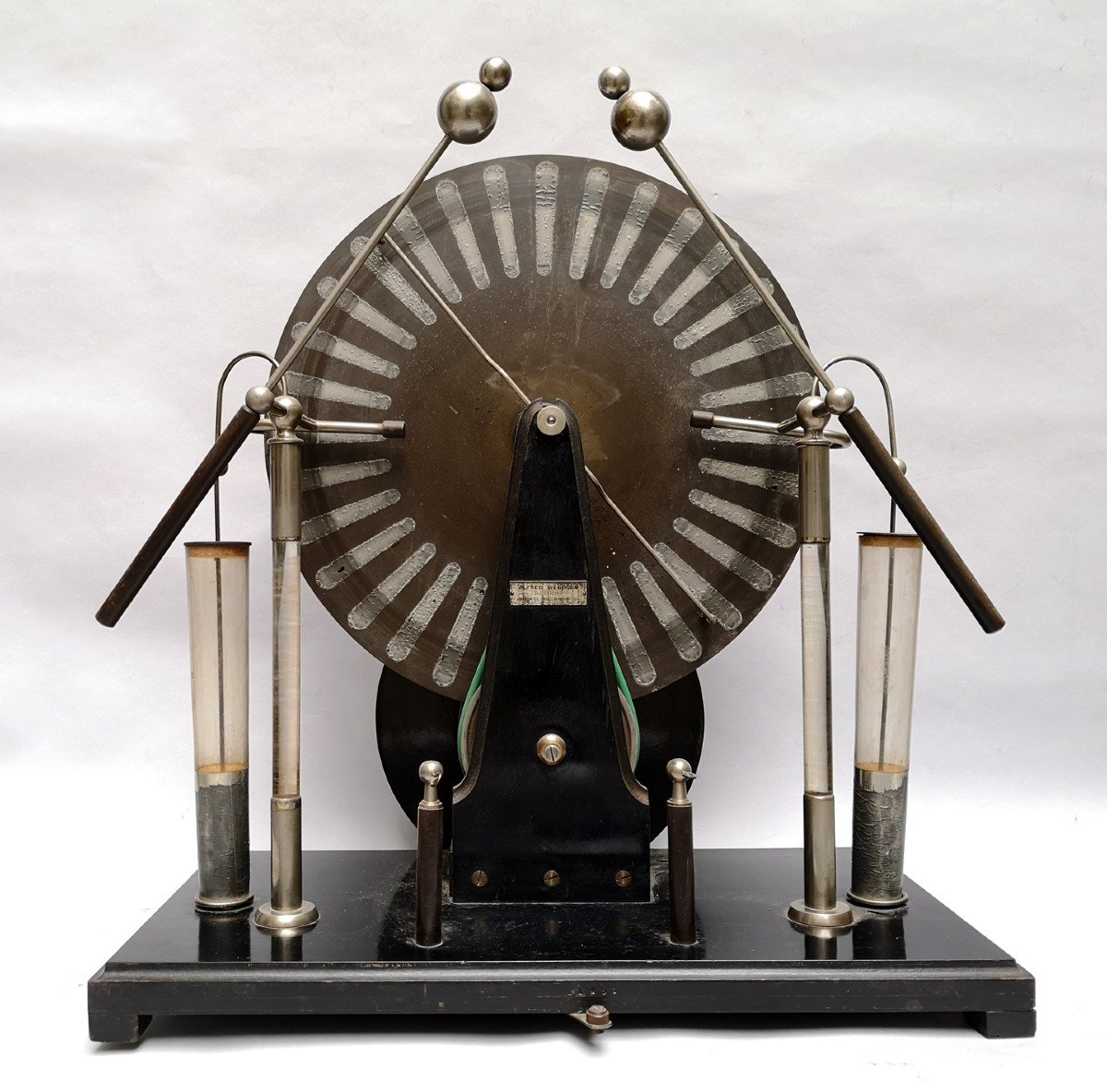

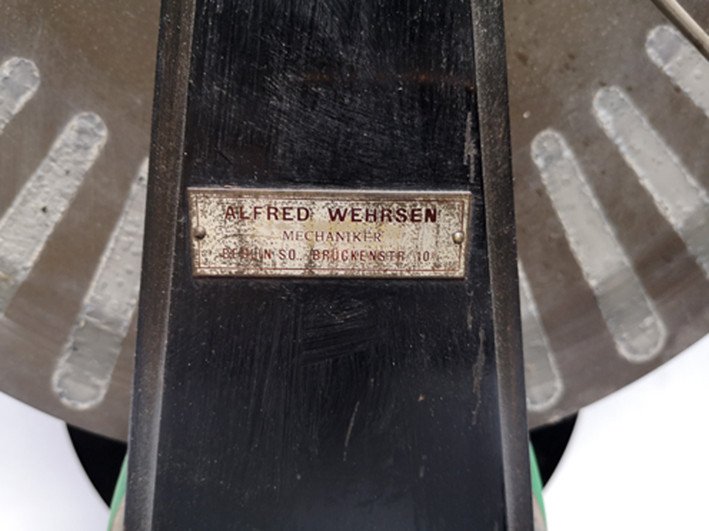
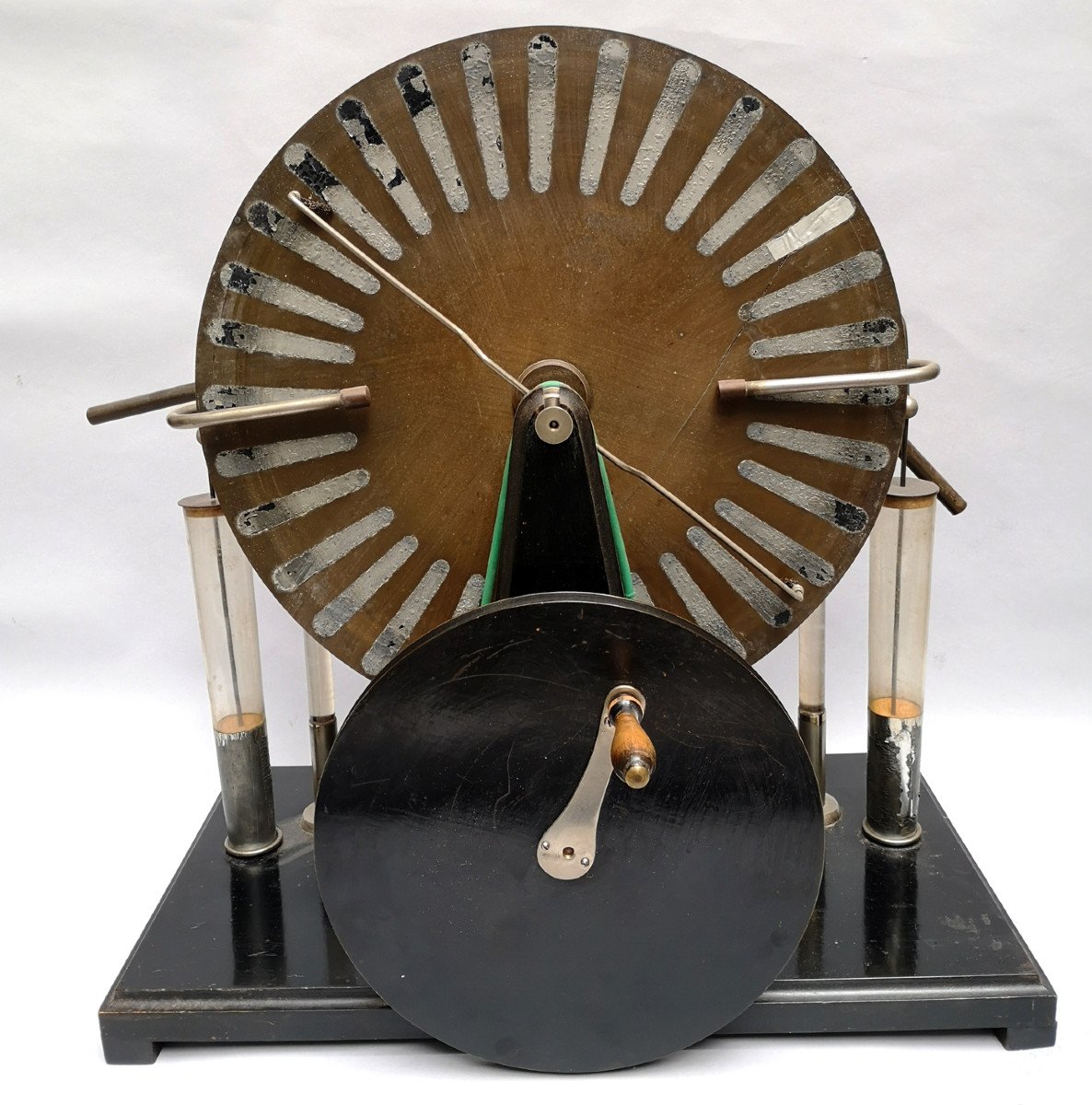
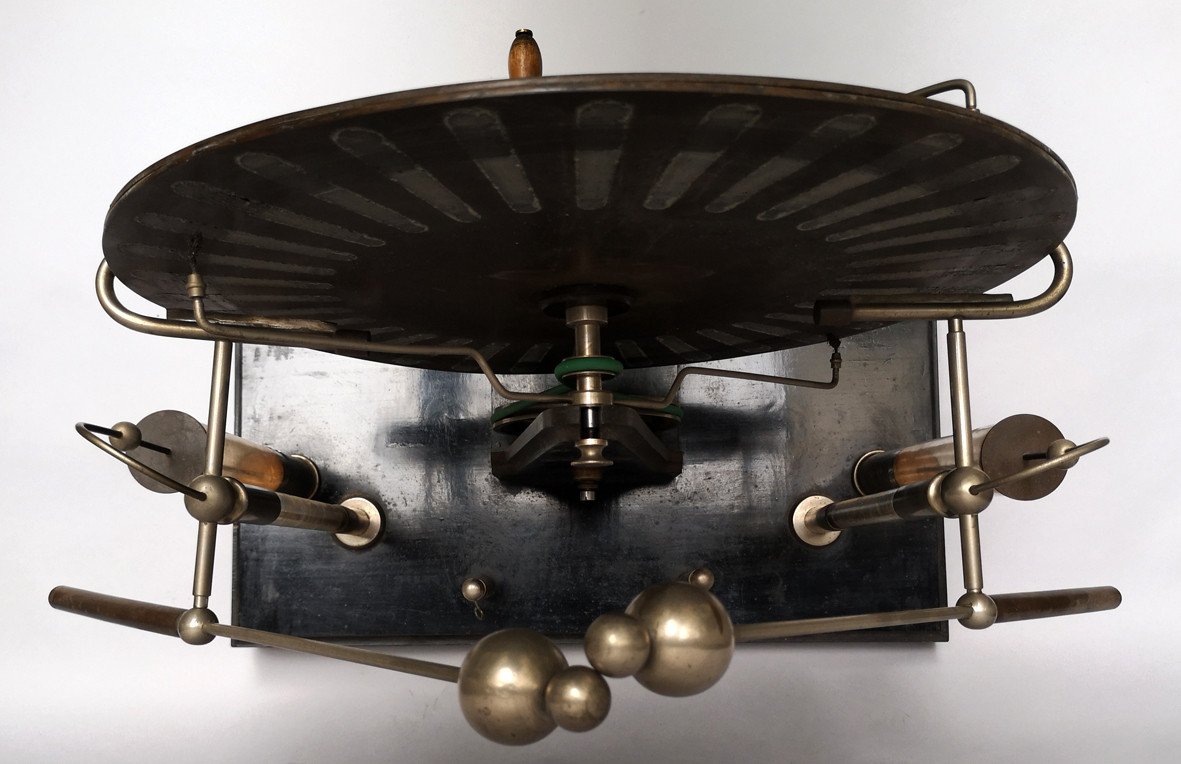
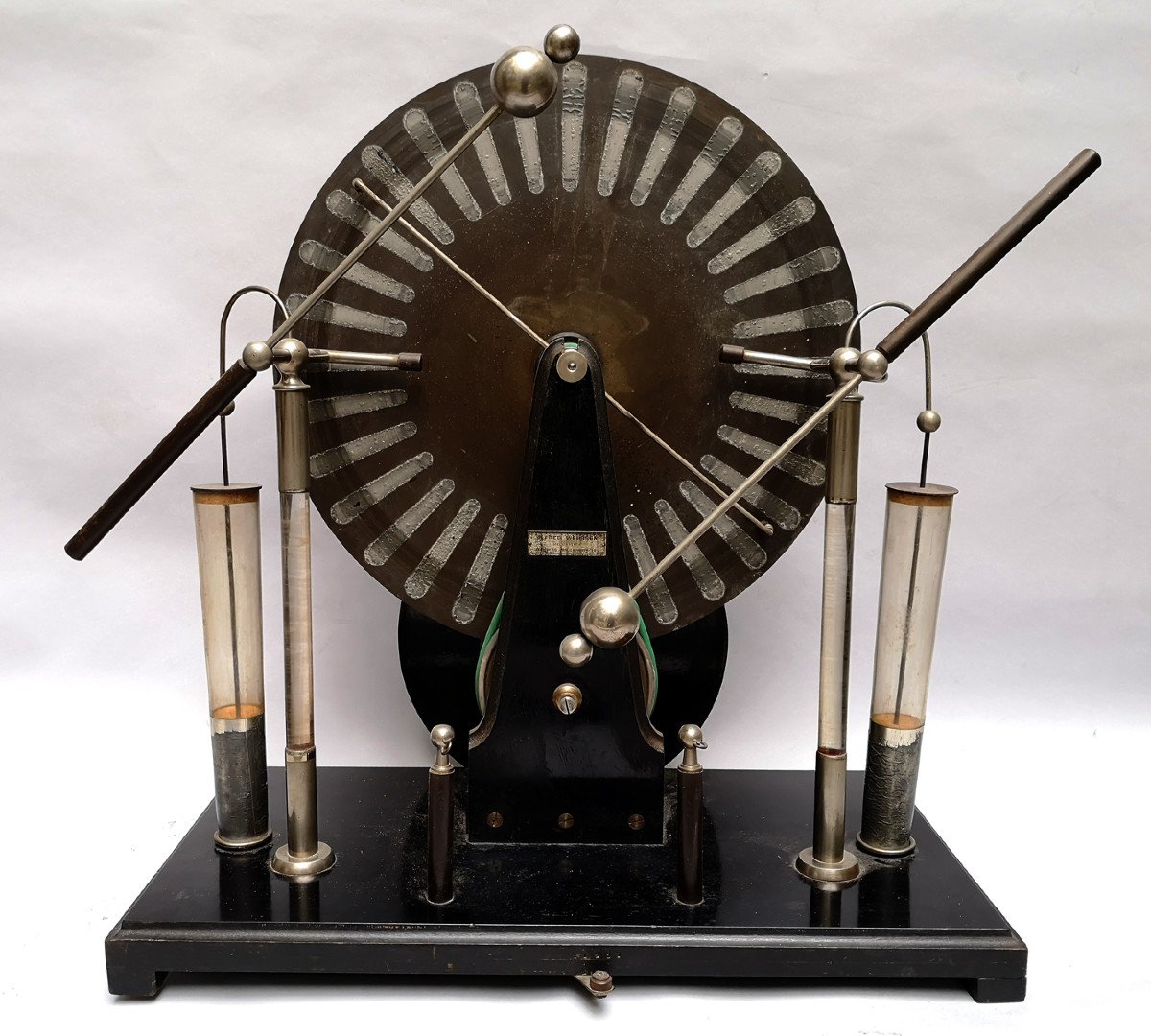











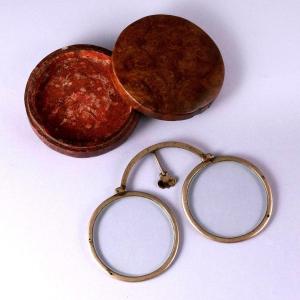









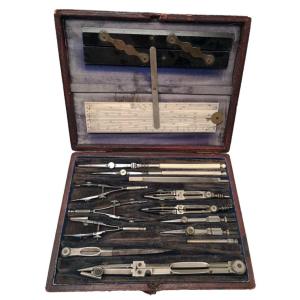




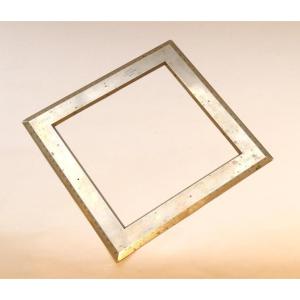



 Le Magazine de PROANTIC
Le Magazine de PROANTIC TRÉSORS Magazine
TRÉSORS Magazine Rivista Artiquariato
Rivista Artiquariato